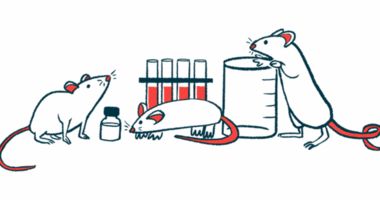Dosing Begins in Phase 1 Clinical Trial of AAV-GAD Gene Therapy
Trial is recruiting at 2 US sites for those with Parkinson's, ages 25 to 85

MeiraGTx’s new Phase 1/2 clinical trial of AAV-GAD, its investigational gene therapy for Parkinson’s disease, has started dosing patients, the company announced in a press release.
“We are now dosing patients with adeno-associated virus (AAV) encoding glutamic acid decarboxylase (AAV-GAD), an investigational gene therapy product candidate for Parkinson’s disease,” said Alexandria Forbes, PhD, president and chief executive officer of MeiraGTx.
The AAV-GAD study (NCT05603312) intends to recruit 12 participants with confirmed Parkinson’s, ages 25 to 85, who have responded to levodopa for least 12 months.
Participants will be screened for up to 40 days, after which they will receive the gene therapy or a sham surgical procedure, and subsequently followed for 26 weeks.
The trial’s main goal is to evaluate the safety and tolerability of AAV versus the sham surgical procedure.
Additional objectives include assessing the effects of AAV-GAD in patient’s motor function within 12 weeks and 26 weeks after treatment compared to the trial’s start (baseline) and the sham procedure group.
Motor function will be evaluated using the Movement Disorder Society Unified Parkinson’s Disease Rating Scale (MDS-UPDRS) Part 3 score in the off state, when symptoms are not being fully controlled by medication.
The trial will take place at two clinical sites in the U.S., one of which is currently recruiting. More information on enrollment and additional eligibility criteria are available on the trial’s webpage.
AAV-GAD is an experimental gene therapy that uses a harmless adeno-associated virus (AAV) to deliver a copy of the glutamic acid decarboxylase (GAD) gene directly to nerve cells (neurons) in a brain region called subthalamic nucleus (STN). This region is involved in movement control and is affected in Parkinson’s disease.
The GAD gene contains the instructions to make an enzyme, also called GAD, that is important for the production of gamma-aminobutyric acid (GABA), a key inhibitory neurotransmitter in the brain responsible for preventing excessive neuronal activity. Neurotransmitters are small molecules that nerve cells use to communicate with each other.
By boosting the production of GABA in neurons of the STN, AAV-GAD is believed to be capable of rescuing the normal activity of neural circuits responsible for controlling body movements, alleviating motor symptoms of Parkinson’s.
Trial initiation follows the approval of a new investigational new drug (IND) application, under which the gene therapy’s manufacturing is conducted in the company’s current Good Manufacturing Practice (cGMP) facility in London. This type of facility ensures the material is of high quality, allowing for a controlled composition of the material used in the therapy.







